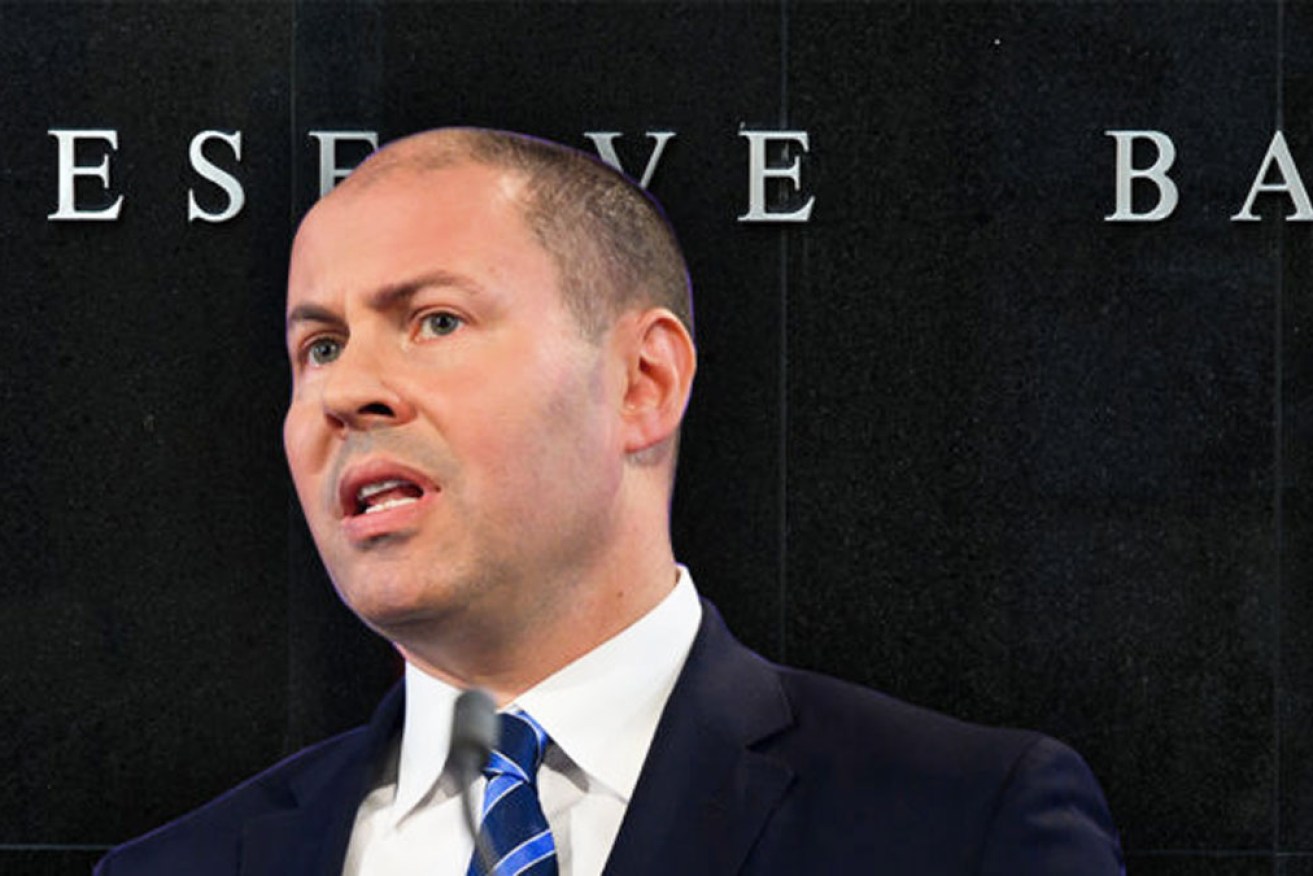Michael Pascoe: Josh Frydenberg’s crystal ball turns darker


Treasurer Josh Frydenberg has a hard task ahead of him, to put a positive spin on next month's economic outlook. Photo: Getty
Another day, another batch of disappointing news for the economic outlook Josh Frydenberg is preparing to deliver next month, more reasons the government’s contractionary fiscal policy looks dangerous.
Somewhere in the bowels of Treasury, economists are downgrading the forecasts already downgraded by the Reserve Bank, IMF and OECD and wondering how to tell their boss.
From the Australian Bureau of Statistics came the September quarter private capital expenditure figures.
Outside a welcome lift in mining, the private sector isn’t coming to the capex investment party – and a fair whack of the mining lift is eroded by soft non-mining capex expectations.
What’s worse, construction industry forecaster Macromonitor has looked beyond the ABS horizon and seen the four-year boom in non-residential construction peaking in 2020, then slipping into a multi-year decline. Ouch.
And that’s after Wednesday’s ABS figures showing residential construction down more than 10 per cent in the September quarter on the same period last year and off 3 per cent on the June quarter, the steepest decline in nearly two decades.
It all adds up to the government and RBA betting the house, so to speak, on a renewed property price bubble sparking a resurgence in residential construction in 2021.
In the meantime, the government’s economic forecasts for this financial year look sillier by the day.
The early data feeding into next Wednesday’s national accounts – construction, retail sales, capex – promise another weak GDP figure to start the financial year.
Thursday’s ABS figures showed trend September private capex down 1.5 per cent since the previous corresponding quarter and 0.6 per cent from June – worse than the market expected.
What matters more about the capex survey though is that it includes a glimpse of the future. Aside from asking the nation’s CFOs what they have spent, the ABS asks how much they will spend over the financial year.
Typically, the CFOs begin the expectations part of the survey in Scrooge fashion, hoping to spend less than the past year.
As time goes on, necessity tends to winkle a few more coins out of the bean counters and the spend builds.
The latest survey finds the CFOs intend investing $116.7 billion this financial year – but that’s only 2.5 per cent more than they thought they were going to spend this time last year for 2018-19.
It’s a soft increase, particularly after quarterly spending actually fell from the June to the September quarters.
The only strong bit of the survey is in mining with expectations for this financial year of $38.4 billion, up 15.7 per cent from the survey for 2018-19.
After years of mining capex falling as the big projects have been completed, it’s a welcome change that will help the GDP number.
But for the biggest category the ABS has for non-mining, “other selected industries”, the latest estimate of $68.6 billion is down 3.3 per cent from the corresponding survey.
And “other selected industries” capex is 79 per cent bigger than mining capex, impacting many more people across a much broader swathe of Australia.
Then there’s Macromonitor’s non-residential building report.
Non-residential building and public infrastructure investment are playing a vital role in countering the economic slack from residential building falling.
Macromonitor thinks the infrastructure spend will continue to ramp up this financial year, but then plateau in real terms.
And now the company says non-residential building will have one more year of growth, with hospitals and sporting stadia starring.
By the end of 2020, annual non-residential building work completed will have increased by 26 per cent in real terms over four years.
But “we then expect a downturn of around 14 per cent” over the next three years.
The picture emerging for the run up to the 2022 election then is an economy dependent on housing more than ever.
As the RBA has effectively admitted, consumption will still be soft with real after-tax wages growth stagnant, meaning most people will be feeling no improvement in living standards.
New mining investment will follow infrastructure in plateauing, non-residential building will be heading south, and Brazil’s iron ore mines should be coming back on stream, taking away a major prop for the iron ore price.
Overseeing that picture is a government that has been pushing the RBA to cut rates until it only has two small shots of dubious effectiveness left.
Beyond that be dragons, or at least “unconventional monetary policy” that the RBA is loath to implement short of a crisis.
However Treasurer Frydenberg tries to spin next month’s mid-year economic and fiscal outlook, if the numbers are not sobering, you’ll know they are false.









